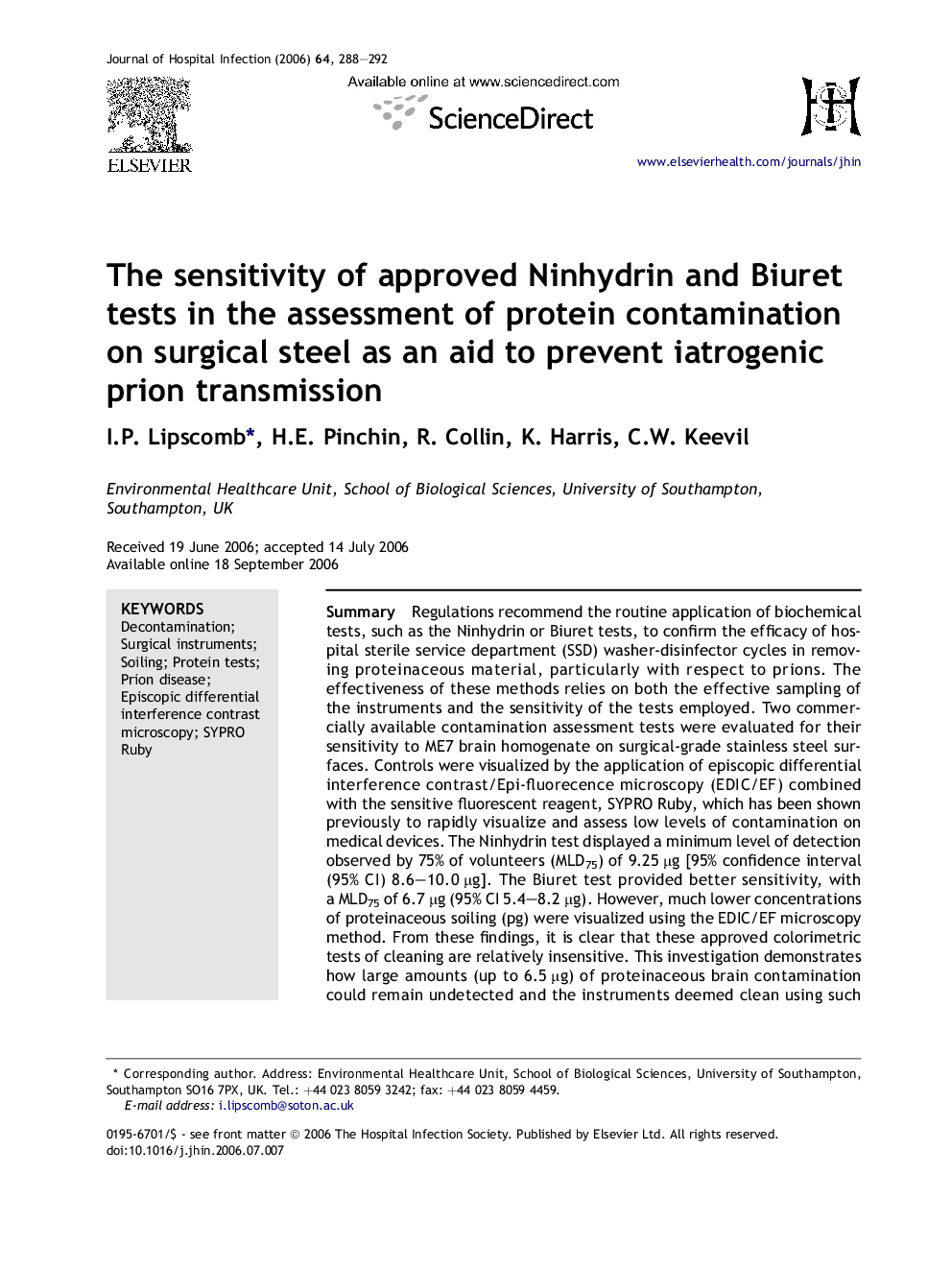| کد مقاله | کد نشریه | سال انتشار | مقاله انگلیسی | نسخه تمام متن |
|---|---|---|---|---|
| 3374058 | 1219317 | 2006 | 5 صفحه PDF | دانلود رایگان |

SummaryRegulations recommend the routine application of biochemical tests, such as the Ninhydrin or Biuret tests, to confirm the efficacy of hospital sterile service department (SSD) washer-disinfector cycles in removing proteinaceous material, particularly with respect to prions. The effectiveness of these methods relies on both the effective sampling of the instruments and the sensitivity of the tests employed. Two commercially available contamination assessment tests were evaluated for their sensitivity to ME7 brain homogenate on surgical-grade stainless steel surfaces. Controls were visualized by the application of episcopic differential interference contrast/Epi-fluorecence microscopy (EDIC/EF) combined with the sensitive fluorescent reagent, SYPRO Ruby, which has been shown previously to rapidly visualize and assess low levels of contamination on medical devices. The Ninhydrin test displayed a minimum level of detection observed by 75% of volunteers (MLD75) of 9.25 μg [95% confidence interval (95% CI) 8.6–10.0 μg]. The Biuret test provided better sensitivity, with a MLD75 of 6.7 μg (95% CI 5.4–8.2 μg). However, much lower concentrations of proteinaceous soiling (pg) were visualized using the EDIC/EF microscopy method. From these findings, it is clear that these approved colorimetric tests of cleaning are relatively insensitive. This investigation demonstrates how large amounts (up to 6.5 μg) of proteinaceous brain contamination could remain undetected and the instruments deemed clean using such methods. The application of more sensitive cleanliness evaluation methods should be applied to reduce the risk of iatrogenic transmission of prion disease in ‘high-risk’ instruments such as neurosurgical devices.
Journal: Journal of Hospital Infection - Volume 64, Issue 3, November 2006, Pages 288–292